
Échelle de dureté MOHS
 L'échelle de dureté de Mohs est une mesure relative de la résistance d'un minéral ou d'une pierre précieuse aux rayures. Outil essentiel en gemmologie, l'échelle de Mohs est essentielle pour identifier les pierres précieuses et prévenir leur détérioration.
L'échelle de dureté de Mohs est une mesure relative de la résistance d'un minéral ou d'une pierre précieuse aux rayures. Outil essentiel en gemmologie, l'échelle de Mohs est essentielle pour identifier les pierres précieuses et prévenir leur détérioration.
D'où vient le nom de l'échelle de dureté minérale ?
Le minéralogiste et géologue allemand Friedrich Mohs a créé l'échelle de Mohs en 1812. À l'époque, la plupart des classifications minérales se limitaient à la composition chimique. Alors que l'érudit antique Théophraste comparait pour la première fois la dureté des pierres précieuses en 300 av. J.-C., Mohs a créé la première liste officielle de classification.
Mohs a établi dix classements : 1 pour le plus bas et 10 pour le plus haut. Le diamant étant la pierre la plus dure au monde, il l'a utilisé pour représenter le dixième. À partir de là, il a rassemblé neuf minéraux plus facilement disponibles, de dureté variable, pour établir chaque classement.
Bien que l'échelle de dureté de Mohs ne soit pas parfaite, c'est un outil pratique et essentiel pour tout gemmologue ou passionné.
Dans ce guide, nous expliquerons l'importance de l'échelle de Mohs, son utilisation et la position de chaque pierre précieuse sur celle-ci, des minéraux les plus tendres aux plus durs. Pour commencer, voici un bref aperçu de l'échelle de dureté MOHS :
1 : Talc
2 : Gypse
3 : Calcite
4 : Fluorine
5 : Apatite
6 : Feldspath
7 : Quartz
8 : Topaze
9 : Corindon
10 : Diamant
Maintenant, passons au reste !
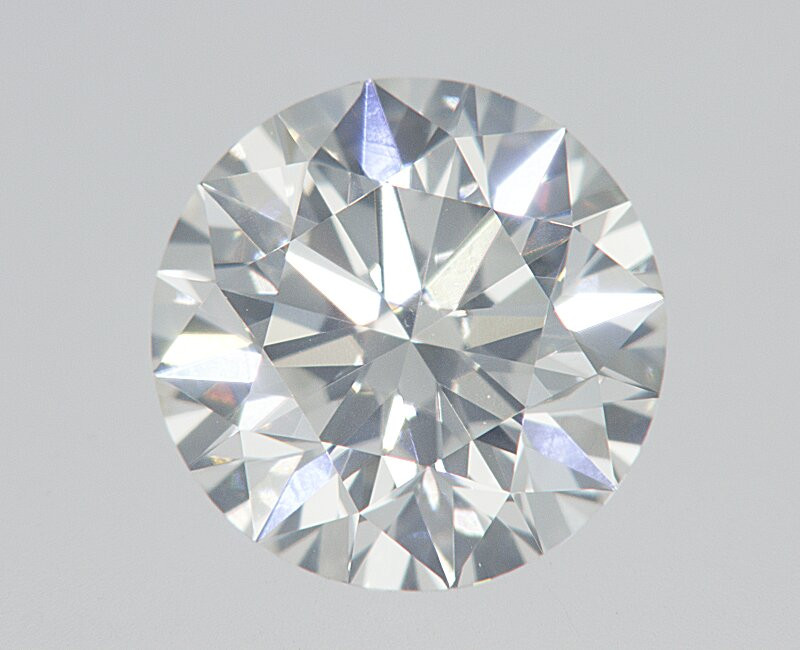
Quelle est la dureté d’un minéral ?
Vous savez que la dureté est liée aux rayures, mais comment définissons-nous une rayure ?
Selon l'échelle de dureté de Mohs, une « rayure » désigne un défaut permanent et visible (ou « dislocation »). Si la dureté d'une pierre (voir ci-après) est plus élastique et retrouve ensuite sa forme et son aspect d'origine, il ne s'agit pas d'une rayure selon l'échelle de Mohs.
Lorsque le minéral A peut rayer le minéral B, le minéral A sera classé plus haut que le minéral B.
Alors, un minéral à 8 degrés de dureté est-il deux fois plus dur qu'un minéral à 4 degrés de dureté ? Non, mais c'est une idée fausse courante ! En réalité, l'échelle de Mohs est une échelle ordinale qualitative.
Une échelle qualitative… et maintenant ? Une échelle « qualitative » utilise des traits pour décrire quelque chose d'indénombrable, plutôt qu'une mesure numérique. Les échelles « ordinales » sont classées par rang. Chaque niveau est simplement supérieur ou inférieur à un autre ; il est impossible de les comparer précisément avec des chiffres.
En termes simples, les chiffres de 1 à 10 sur l’échelle pourraient être remplacés par AJ et fonctionneraient essentiellement de la même manière.
Pour mettre les choses en perspective, la dureté du saphir est de 9, mais les saphirs sont 2 fois plus durs que la topaze (8 sur l'échelle de dureté de Mohs) et 4 fois plus mous que le diamant (10).

Niveaux de dureté uniques
Les chiffres de base de l'échelle de dureté de Mohs de 1 à 10 ne s'appliquent pas à tous les minéraux et vous pouvez rencontrer certaines irrégularités.
Tout d’abord, vous pouvez voir des valeurs intermédiaires comme la dureté de l’émeraude à 7,5.
Les classements intermédiaires sont simplement des classements plus précis sur l'échelle. Dans le cas de l'émeraude, sa dureté est inférieure à celle de la topaze bleue (8), mais supérieure à celle du quartz rose (7).
Une autre irrégularité que vous pourriez voir est une plage de dureté .
Par exemple, la dureté de l'opale varie de 5 à 6,5. Pourquoi ? La teneur en eau des opales varie, ce qui rend leur composition irrégulière. La composition chimique pouvant influencer la dureté, trois opales différentes peuvent avoir respectivement une dureté de 5, 6 et 6,5.
Un autre facteur pouvant affecter la dureté Mohs d'une pierre précieuse est l'altération climatique. Si les facteurs environnementaux (vent, pluie, bactéries, etc.) usent un minéral, celui-ci peut devenir plus mou.
Enfin, vous pouvez voir différents niveaux de dureté sur le même cristal.
Les cristaux de cyanite , par exemple, ont une dureté de 5 sur un axe et de 7 sur l'axe perpendiculaire. Ces différences de dureté s'expliquent par le fait qu'un axe présente des liaisons moléculaires plus faibles que l'autre.
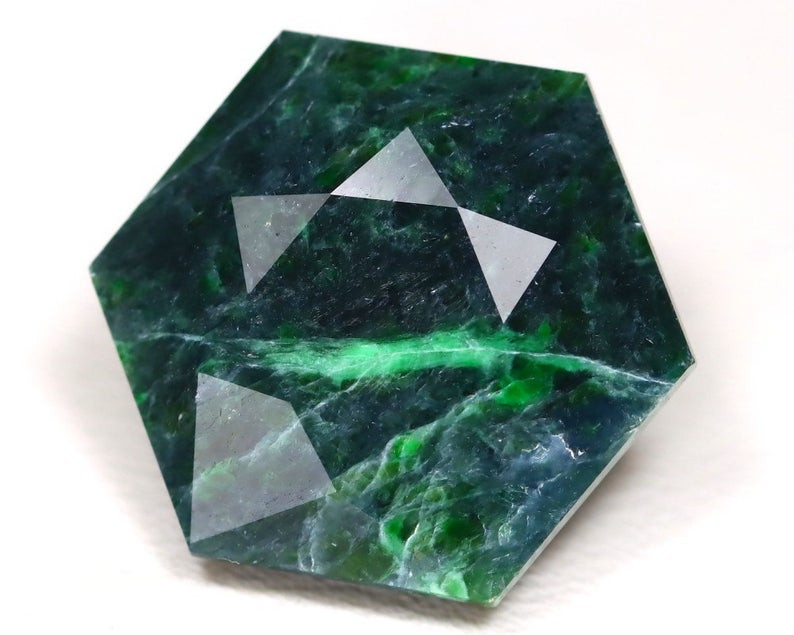
Dureté vs. ténacité
On entend souvent dire que le diamant est la pierre la plus résistante, mais est-ce vrai ? Le diamant est classé 10 sur l'échelle de Mohs, ce qui en fait le minéral le plus dur au monde.
Cependant, le plus dur ne signifie pas incassable, car l'échelle de Mohs n'est pas une échelle de ténacité.
La ténacité (ou ténacité) décrit la résistance d'un minéral à la rupture ou à l'écaillage.
Les diamants sont fragiles, ce qui signifie qu'ils se cassent facilement. On dit souvent qu'un marteau en acier ne peut pas rayer un diamant, mais il peut le briser.
Comparons le diamant au jade jadéite. La dureté du jade est de 6,5-7, il est donc plus facile à rayer que le diamant. Cependant, le jade est plus résistant que le diamant, il est donc plus facile de casser un diamant qu'un jade.
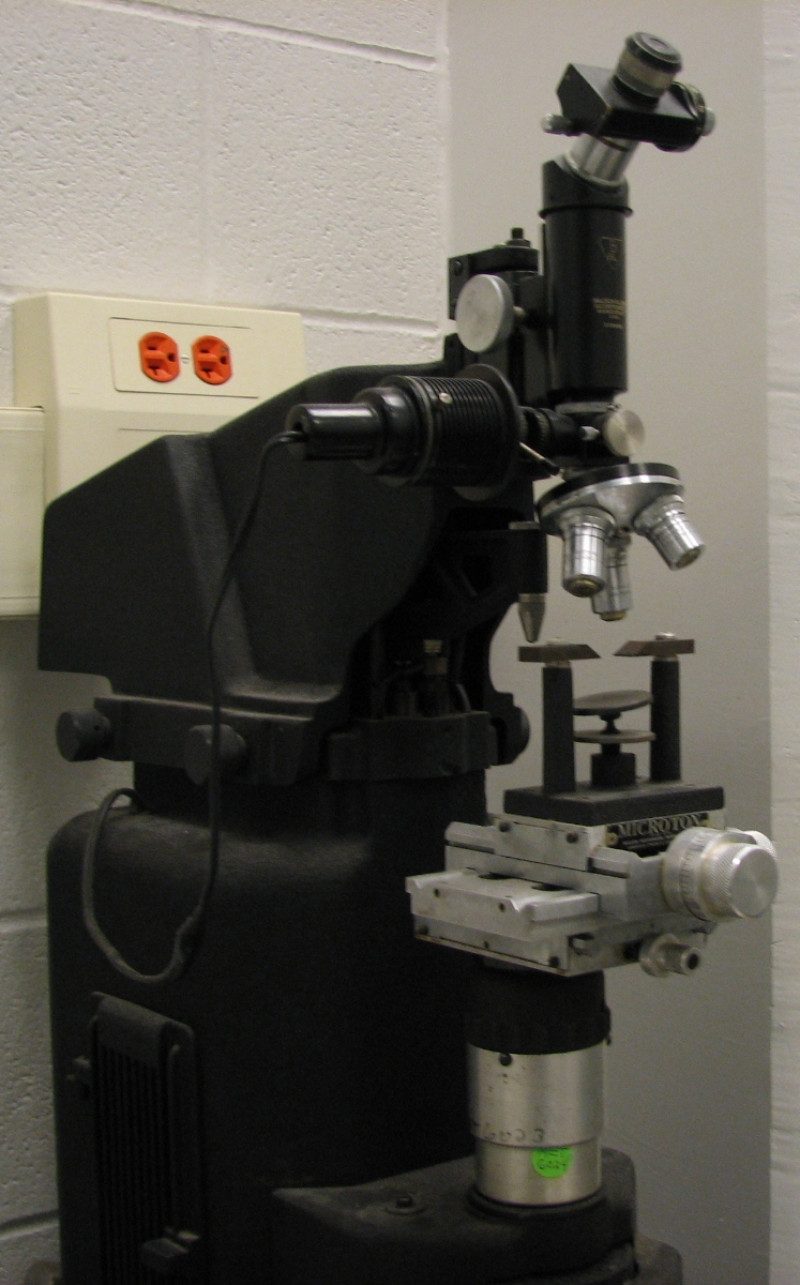 Image : Duromètre Vickers
Image : Duromètre Vickers
Échelles de dureté de Mohs et autres
L'échelle de Mohs n'est pas la seule échelle de dureté des pierres précieuses. Il existe d'autres échelles, comme Rockwell, Vickers, Knoop, Shore et Brinell. Chaque échelle est adaptée à des types de matériaux spécifiques. Les plus populaires sont Rockwell et Vickers.
L'essai Rockwell utilise une machine à profondeur différentielle pour déterminer la dureté par indentation. Il mesure la profondeur d'une indentation en appliquant une charge préliminaire, une charge légèrement accrue, puis une charge plus importante. C'est l'essai de dureté le plus précis, mais il nécessite un équipement de pointe.
L'essai Vickers est un essai de microdureté ou de micro-indentation, idéal pour les échantillons fins ou de petite taille. Le procédé Vickers mesure également la profondeur d'indentation, mais pour des empreintes beaucoup plus petites. Cependant, cet essai nécessite des échantillons lisses et polis, un équipement de pointe et des calculs précis.
Le test de Mohs est le plus souvent utilisé par les gemmologues et les passionnés car il est plus accessible, il ne nécessite pas d'équipement ni de calculs avancés et il est le plus simple à comprendre.
Revenons à l’échelle minérale de Mohs, voyons où se classe chaque pierre précieuse !
Tableau de l'échelle de dureté de Mohs
Le minéral le plus tendre sur l'échelle de Mohs est le talc. De là, nous disposons de la référence standard pour les minéraux les plus tendres aux plus durs :

Bien sûr, il existe plus de dix types de minéraux. De plus, les objets non précieux comme le métal, les ongles, les pièces de monnaie et le verre ont également des mesures de dureté.
Examinons une échelle de dureté complète — minéraux, pierres précieuses et autres éléments inclus — du plus doux au plus dur :
1 : Talc
1 - 2 : Graphite, Molybdénite, Pyrophyllite
1 - 3 : Bauxite
1 - 5,5 : Limonite
1,5 - 2,5 : Soufre
2 : Gypse, Sylvite, Glauconite
2 - 2,5 : Halite, Cinabre, Chlorite, Ongle
2 - 3 : Moscovite
2,5 - 2,75 : Galène
2,5 - 3 : Argent, Or, Cuivre, Chalcocite, Biotite
2,5 - 3,5 : Barytine
3 : Calcite, feuille de cuivre
3 - 3,25 : Bornite
3 - 3,5 : Withérite, Anhydrite
3 - 4 : Vanadinite
3 - 5 : Serpentine
3,5 - 4 : Sphalérite, Rhodochrosite, Pyrrhotite, Malachite, Dolomite, Cuprite, Chalcopyrite, Azurite
3,5 - 4,5 : Sidérite
3,5 - 5 : Magnésite
4 : Fluorine
4 - 7 : Verre, Clou
4,5 - 7 : Kyanite
4,5 - 5,5 : Wollastonite
5 : Apatite
5 - 5,5 : Titanite, Monazite
5 - 6 : Uraninite, Turquoise, Ilménite, Hornblende, Enstatite
5 - 6,5 : Magnétite, Lame de couteau, Lime en acier
5 - 7 : Plaque à stries
5,5 - 6 : Sodalite, Néphéline, Chromite, Augite, Arsénopyrite
5,5 - 6,5 : Hématite, Rhodonite, Diopside
6 : Feldspath
6 - 6,5 : Rutile, Pyrite, Préhnite, Néphrite Jade
6 - 7 : Zoïsite, Épidote, Cassitérite
6 - 7,5 : Marcassite
6,5 - 7 : Spodumène, Olivine (Péridot), Jadéite, Jade, Calcédoine
6,5 - 7,5 : Sillimanite, Grenat
7 : Quartz
7 - 7,5 : Tourmaline, Staurolite, Cordiérite (Iolite)
7,5 : Zircon, Euclase
7,5 - 8 : Béryl
8 : Topaze, Spinelle
8.5 : Chrysobéryl
9 : Corindon (Rubis, Saphir)
10 : Diamant
Vous ne trouvez pas une pierre précieuse dans la liste ? Vérifiez sa famille minérale !
Par exemple, la dureté du jaspe est de 6,5-7, comme celle de toutes les calcédoines . Certaines familles sont plus complexes, comme le feldspath. La labradorite , par exemple, a une dureté de 6-6,5, contrairement à la dureté standard de 6 de la plupart des feldspaths.

Pourquoi l’échelle de Mohs est-elle importante ?
Imaginez que vous partez en voyage et que vous emportez des bijoux en pierres précieuses – un collier d'améthyste , des boucles d'oreilles en diamant et une bague en fluorite, par exemple. Vous mettez tous les bijoux dans une pochette et la glissez dans votre valise. Mais oh non ! En déballant vos affaires, vous constatez que vos fluorites et vos améthystes sont abîmées.
Le scénario ci-dessus illustre l'utilité de connaître la dureté de toute pierre précieuse ou semi-précieuse pour tous les amateurs de bijoux. Si vous saviez que la dureté de l'améthyste est inférieure à celle du diamant, et que les deux sont plus dures que la fluorite, vous auriez pu éviter les rayures en les rangeant séparément.
Un autre domaine dans lequel la connaissance de la dureté des pierres précieuses est cruciale est le travail lapidaire (taille des pierres précieuses).
Les lapidaires ne peuvent pas se contenter de choisir la plus belle taille facettée : ils doivent planifier leur taille en fonction de la dureté, de la résistance et du clivage de la pierre. Un clivage parfait, une faible résistance et une faible dureté peuvent compliquer le polissage et le façonnage d'une pierre. Une technique et une expertise lapidaires appropriées sont donc cruciales.
La troisième utilisation importante de l’échelle de dureté de Mohs est l’identification.
Imaginez que vous êtes un passionné de pierres et de gemmes en quête de pierres précieuses (ou « rockhounding ») en Californie, aux États-Unis. Vous repérez un minéral vert qui pourrait être du jade – une pierre précieuse ! Espérant le vendre, vous l'apportez à un gemmologue. Vos espoirs s'évanouissent lorsque le gemmologue vous révèle qu'il ne s'agit pas de jade, mais de verdite, une autre pierre précieuse verte de valeur bien moindre.
Vous vous seriez épargné les montagnes russes d'émotions si vous aviez apporté vos propres outils de test de dureté !
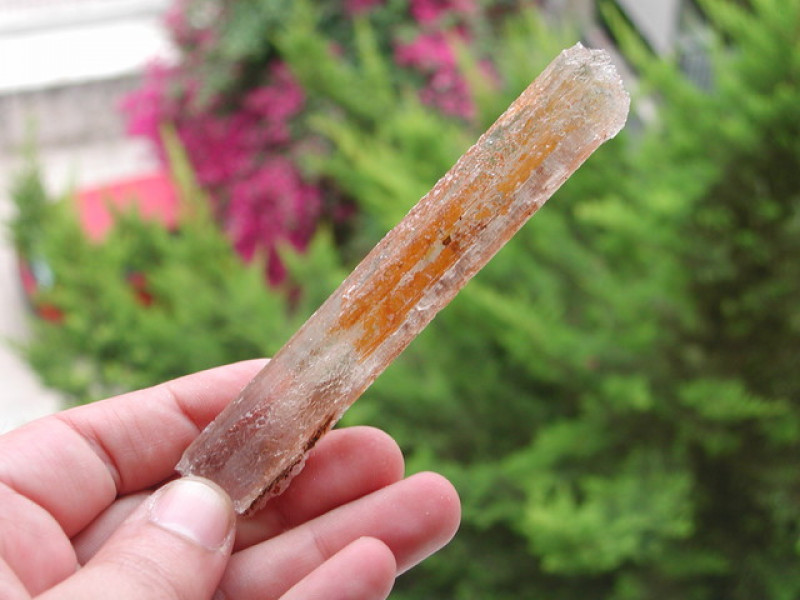
Comment tester la dureté minérale
L'essai de dureté est une première étape facile pour l'identification sur le terrain. Quels outils sont utilisés pour tester la dureté d'un minéral ?
Un kit de test de dureté Mohs standard comporte un récipient divisé en 9 compartiments, chacun contenant des cristaux bruts des 1 à 9 premiers minéraux de dureté : talc, gypse, calcite, fluorite, apatite, feldspath, quartz, topaze et corindon. Les diamants étant chers, ils sont généralement laissés de côté.
Une autre option est un jeu de pointes de dureté métalliques pointues. Ces pointes à double extrémité sont souvent codées par couleur et étiquetées avec chaque degré de dureté. Plus compactes, elles permettent de réaliser des rayures précises et discrètes. Cependant, elles sont plus chères que les kits de test standard.
Test de dureté étape par étape
Prêt à devenir testeur de dureté Mohs ? Commençons !
Rassemblez votre kit de test, un échantillon de minéral inconnu, une échelle de dureté Mohs et un bloc-notes pour noter les résultats. Si vous êtes à l'intérieur, effectuez le test sur une table de travail (et non sur un meuble élégant) recouverte d'un revêtement résistant comme du caoutchouc.
Étape 1 : Grattez l’échantillon avec votre ongle.
Les ongles ont une dureté de 2 à 2,5 ; si cela laisse une rayure, vous avez réduit vos options aux minéraux entre 1 et 2,5. Ensuite, grattez avec du plâtre, puis du talc.
Pas de rayure ? Passez à l'étape 2.
Étape 2 : Grattez l’échantillon avec du plâtre ou un pic à 2 niveaux de dureté.
Tenez le spécimen inconnu d'une main, posé sur la table. Vous pouvez garder le dessous (ou toute zone plane et discrète) du spécimen face visible pour le rayer.
Prenez le minéral d'essai ou le pic de dureté et placez le bord tranchant contre l'échantillon. Maintenez l'échantillon en place et faites glisser fermement le minéral d'essai sur l'échantillon. Pour plus de sécurité, éloignez-le de votre corps.
Essuyez toute poussière de pierre précieuse produite et vérifiez la présence d'une rayure. Une petite entaille devrait être visible ; utilisez une loupe si nécessaire.
Toujours pas de rayure ? Passez à l'étape 3.
Étape 3 : Continuez à tester avec chaque minéral ou dureté successif.
Suivez les instructions de l'étape 2 mais avec votre matériel à 3 niveaux, puis à 4 niveaux, et ainsi de suite jusqu'à ce que vous voyiez une rayure.
Si vous constatez une rayure, notez le minéral qui l'a causée et sa dureté. Vous pouvez vérifier en frottant l'échantillon contre votre minéral, ce qui ne devrait pas laisser de rayure. Ensuite, consultez votre tableau de dureté de Mohs pour déterminer de quel minéral il pourrait s'agir. Vous hésitez encore ? Effectuez d'autres tests d'identification pour affiner votre recherche.
Conseils de pro pour les tests
Voici quelques conseils supplémentaires pour garantir un test de dureté approprié :
Vérifiez toujours s'il y a une bosse dans la rayure, pas seulement une trace.
Essayez de choisir au moins des spécimens de taille moyenne à tester.
Si vous pensez qu'un spécimen inconnu a subi des intempéries, trouvez un morceau cassé avec le meilleur lustre à gratter.
Des inclusions ou des imperfections de surface peuvent fausser les résultats. Si vous pensez que c'est le cas, grattez une autre zone de l'échantillon.
N'oubliez pas que vous pouvez toujours faire un test de rayure plus d'une fois !
Avec cela, vous êtes prêt à tester !
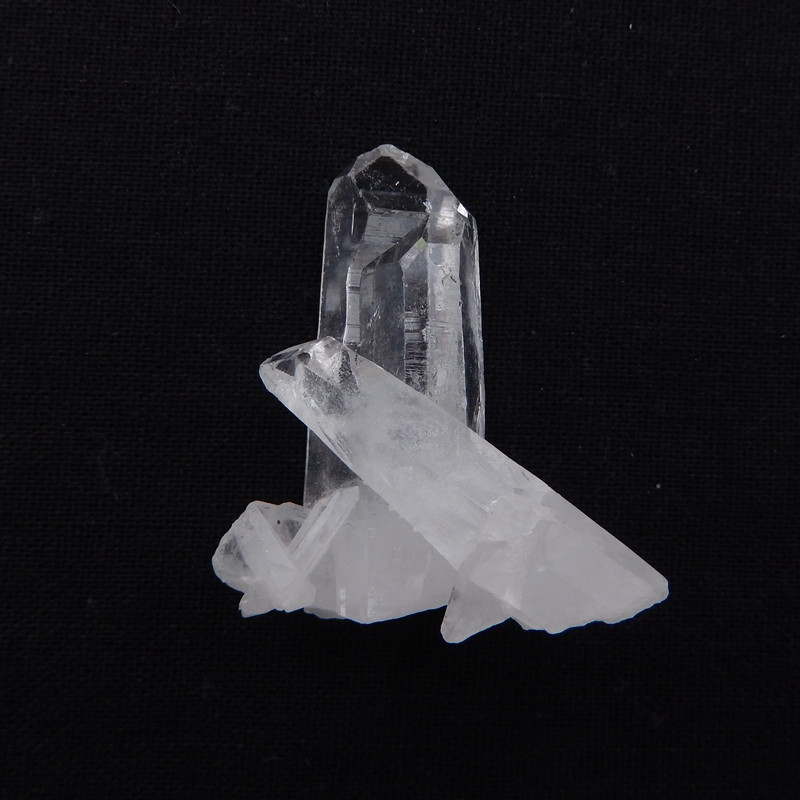
Pas trop dur, n'est-ce pas ?
Connaître la dureté Mohs ne se limite pas aux experts ou aux étudiants en gemmologie. Tout acheteur de bijoux peut préserver l'éclat de ses pierres précieuses en tenant compte de l'échelle de dureté lors de la conservation de ses bijoux.
Une fois que vous aurez commencé à tester, qui sait ? Peut-être découvrirez-vous que la gemmologie est votre véritable vocation ! Pour en savoir plus sur l'analyse des pierres précieuses, découvrez les quatre outils d'analyse essentiels !
ACHETEZ NOS MEILLEURES PIERRES PRÉCIEUSES
Rechercher le Gemstone Encyclopedia
Enchères associées
Articles Liés
Les émeraudes Gota De Aceite possèdent une particularité qui augmente leur valeur. Apprenez-en plus sur ce type d'émeraude rare et découvrez comment elle augmente sa valeur.
9th May 2018
Le jade est une pierre magnifique qui peut prendre de nombreuses couleurs, notamment le vert, l'orange ou le blanc. Apprenez à tester le jade pour vérifier son authenticité.
9th May 2018
La cornaline est une calcédoine célèbre pour ses couleurs orange vif. Découvrez sa signification, son histoire et ses propriétés dans ce guide pratique !
26th Feb 2021
Derniers articles
Découvrez l'histoire, les propriétés, la valeur et les conseils d'entretien de la pierre de sang de poulet, une pierre précieuse rare et éclatante, prisée pour ses motifs rouges saisissants et sa signification culturelle.
8th Dec 2025
La gaylussite est un minéral rare, principalement utilisé dans l'industrie, car elle se trouble facilement en se déshydratant. Découvrez l'histoire, les propriétés, les utilisations et les caractéristiques de la gaylussite dans ce guide complet.
7th Dec 2025
La chiolite est un minéral rare, incolore à blanc, apparenté à la cryolite. Les gemmes sont très rares et proviennent de quelques gisements seulement. Découvrez ici les utilisations, l'histoire, les prix et les caractéristiques de la chiolite.
5th Dec 2025
Catégories d'articles
How To's is where you will find helpful articles from gem Rock Auctions on how to cut gemstones, select gemstones and buy gemstones.
9 les articles








